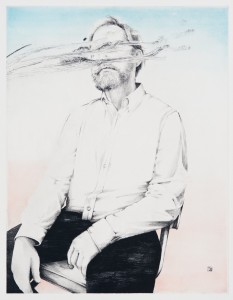 Bokashi, Storm Tharp/PDX Contemporary Art
Bokashi, Storm Tharp/PDX Contemporary Art
By Bob Hicks
This evening is First Thursday, Portland’s monthly movable feast of gallery-hopping, and Mr. Scatter published this guide in this morning’s Oregonian. Lots of options, and as usual it’s just part of the picture: a lot of gallery openings and other art events aren’t included.
Well, it’s a big town. You can list all of the people some of the time, and some of the people all of the time, but you can’t list all of the people all of the time. And that’s probably a very good thing: no sense exploding your brain with too much information.
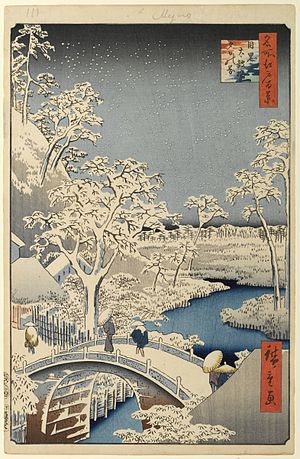 So of the 40 zillion or so images we might show you, we’ve chosen just one: Storm Tharp’s Bokashi, above, a 2011 softground print in an edition of 12 in the group show Oomph at PDX Contemporary Art. And we’re showing this one not just because we like it but also because it comes with a small but intriguing art-history connection, as PDX’s Jane Beebe points out. “One can see the influence of Japanese prints and masks in the trajectory of Storm’s artistic thought and work,” she writes, and then adds: “also I think it is interesting that Bokashi can refer to swipe….. the swipe of the eyes in the print.” She passes along as evidence this image (from One Hundred Famous Views of Edo) by the legendary 19th century Japanese printmaker Hiroshige, along with this explanation from Wikipedia:
So of the 40 zillion or so images we might show you, we’ve chosen just one: Storm Tharp’s Bokashi, above, a 2011 softground print in an edition of 12 in the group show Oomph at PDX Contemporary Art. And we’re showing this one not just because we like it but also because it comes with a small but intriguing art-history connection, as PDX’s Jane Beebe points out. “One can see the influence of Japanese prints and masks in the trajectory of Storm’s artistic thought and work,” she writes, and then adds: “also I think it is interesting that Bokashi can refer to swipe….. the swipe of the eyes in the print.” She passes along as evidence this image (from One Hundred Famous Views of Edo) by the legendary 19th century Japanese printmaker Hiroshige, along with this explanation from Wikipedia:
Bokashi is a technique used in Japanese woodblock printmaking. It achieves a variation in lightness and darkness (value) of a single color by hand applying a gradation of ink to a moistened wooden printing block, rather than inking the block uniformly. This hand-application had to be repeated for each sheet of paper that was printed.
The best-known examples of bokashi are the shadings of a color often used by Hiroshige on landscape prints to depict the sky at the top of the print.
Most of the galleries participating in First Thursday are open from 6 to 8 or 9 p.m. Put on your walking shoes. And remember two things. First, most of the shows will be up all month, so don’t worry about hitting all of them (or any of them, for that matter) tonight. Second, a lot of other good exhibits aren’t taking part in First Thursday at all. Weekend jaunts are good.
*
- Storm Tharp, “Bokashi,” 2011 softground print, edition of 12. 30″ x 22″/PDX Contemporary Art.
- Hiroshige, from “One Hundred Famous Views of Edo,” Wikimedia Commons.
 It strikes Mr. Scatter that what Bialystok has to say about research is equally true for that branch of creativity we like to refer to as artistic. An idea takes hold. You follow it. It leads you somewhere that might utterly astonish you. But once you’ve identified it, you need to trust it to lead you where it will. It’s not blind faith. But it is faith. Which doesn’t mean it won’t sometimes lead you down a dark alley for an artistic mugging. But those are the chances you take.
It strikes Mr. Scatter that what Bialystok has to say about research is equally true for that branch of creativity we like to refer to as artistic. An idea takes hold. You follow it. It leads you somewhere that might utterly astonish you. But once you’ve identified it, you need to trust it to lead you where it will. It’s not blind faith. But it is faith. Which doesn’t mean it won’t sometimes lead you down a dark alley for an artistic mugging. But those are the chances you take.
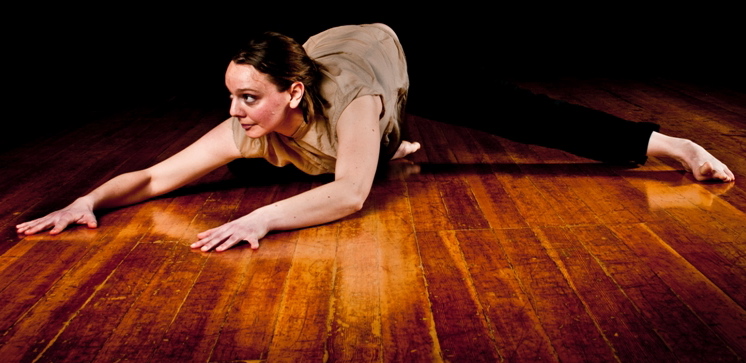 Todd Stephen
Todd Stephen
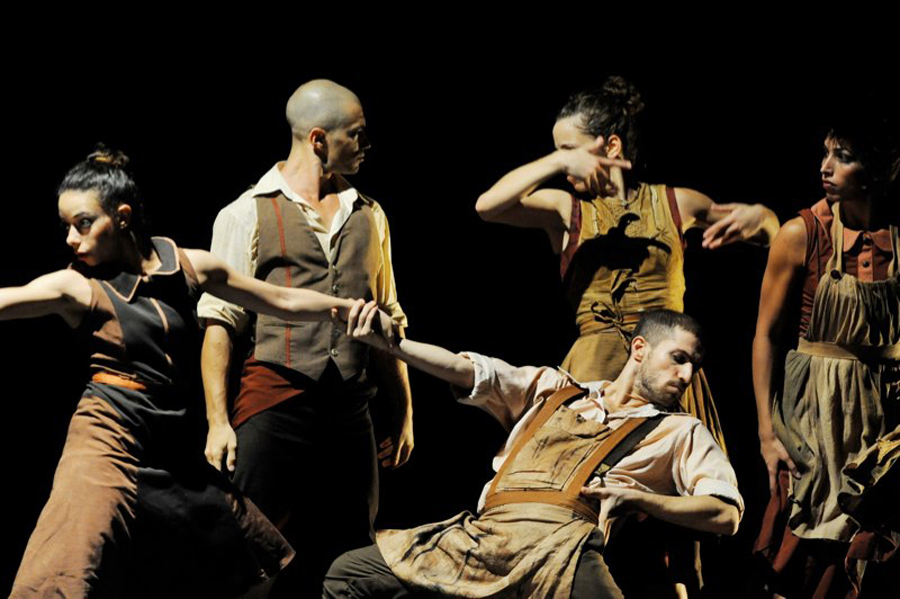 Gadi Dagon
Gadi Dagon Jim was a terrific character actor, a good musician, an assured comedian with dramatic chops who could move with ease from the likes of David Mamet’s American Buffalo (which he performed years ago with the late, great Peter Fornara) to small-scale musicals like Pump Boys and Dinettes to a lot of kids’ shows, including his memorable turn as Smee in Peter Pan.
Jim was a terrific character actor, a good musician, an assured comedian with dramatic chops who could move with ease from the likes of David Mamet’s American Buffalo (which he performed years ago with the late, great Peter Fornara) to small-scale musicals like Pump Boys and Dinettes to a lot of kids’ shows, including his memorable turn as Smee in Peter Pan. 
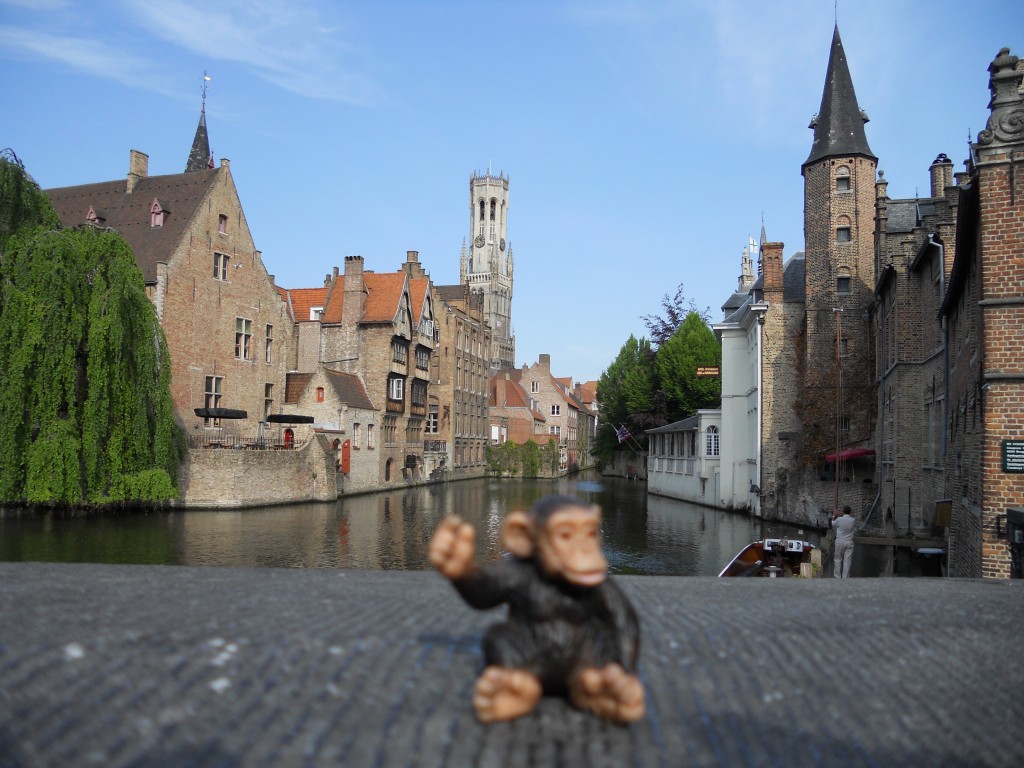
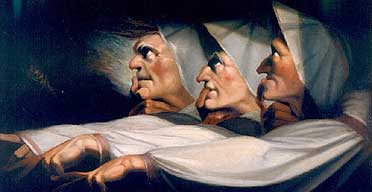
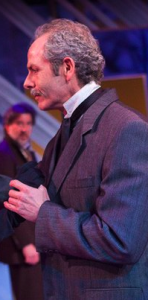 After all these years in Portland as one of the city’s best and busiest actors, Mendelson is still an industrial Midwest big city boy in certain inalienable ways, including his appetite for honest-to-god deli food, which you can’t much get around here except at oases like Kornblatt’s and
After all these years in Portland as one of the city’s best and busiest actors, Mendelson is still an industrial Midwest big city boy in certain inalienable ways, including his appetite for honest-to-god deli food, which you can’t much get around here except at oases like Kornblatt’s and